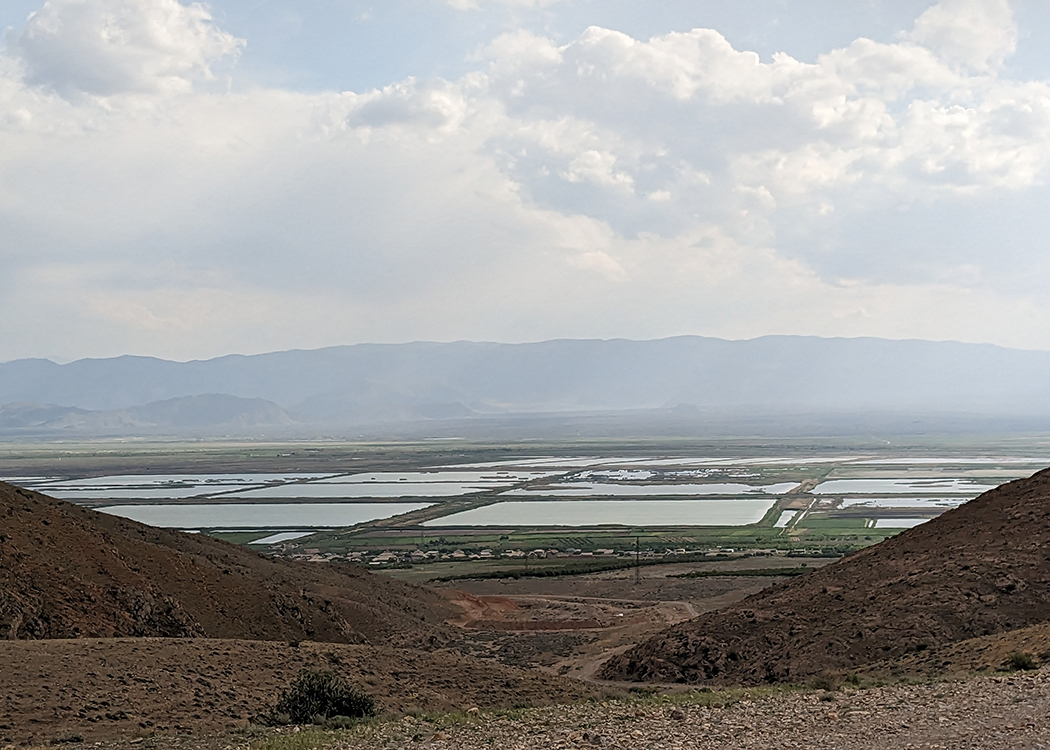Quick Geography Lesson
Another early start with a packed breakfast saw us heading North from Areni. Our destination was the the range of arid hills that lie East of and above Armash. Previous reports are inconsistent in the way they name the three principle sites. The poor positioning of the eBird hotspot pins further confuses matters. The table below along with my annotated map and the subheadings in this post may offer some clarity.
| Traditional Name | eBird Hotspot | Alternative Name (Google Maps) | GPS Coordinates |
| Vedi 1 | Vedi Hills | Angel’s Canyon | |
| Vedi 2 | Vedi Springs | ||
| Ooranots 1 | Oorts Gorge |
Vedi Springs
I used a combination of eBird and Google Maps to navigate us to this site. However, in turns out that the eBird coordinates are at the entrance to the wadi, by a settlement with some running water. We walked across a stony plain either side of the water course but frankly saw very little in breezy overcast conditions. Just a few Isabelline Wheatears and Greater Short-toed Larks. Turns out that we should of started much further up the wadi – see Armash revisited.

As we returned to the car Graham picked up a large falcon terrorising a distant flock of Rosy Starlings. No time to get images but good enought views to determine it was a Saker (WP #74x). We hung around for a bit, but it did not reappear. Driving out of the wadi a monochrome wheatear with a complete back tail-bar flew across the road – Finsch’s Wheatear

With the warming sun raptors became more active and a mixed flock of vultures; Lammergier, Egyptian and Black appeared overhead. My ebird checklist is here.
Vedi Hills
It was getting on for mid-morning by the time we reached this steep sided gorge with running water. Here we found many more Finsch’s Wheatear and Eastern Rock Nuthatch – both species with recently fledged young. Other than that the only obviously new species was Little Ringed Plover. Moreover as the morning wore on the canyon was filling up with day trippers. May 9th is Victory Day in Armenia, a national holiday, and we were birding a popular picnic spot!



Leaving the gorge there were a number of Black-headed Buntings singing in the field margins. All in all somewhat underwhelming ,and not a hint of Grey-necked Bunting or Upcher’s Warbler. My eBird checklist is here.
It is easy to see why there are historic records of Mongolian Finch from both this site and Vedi Springs. A combination of accessible drinking water in high altitude desert. There are plenty of recent records from nearby Türkiye, but the species has not been seen in the Vedi area since 2015. Interestingly Duncan Bulling (see Birding The Silk Road) had drinking Desert Finches a few days later. Again we should almost of certainly of continued deeper into the habitat.
Oorts Gorge
This site lies a little further South and directly overlooks Armash Fish Ponds. It is altogether rougher and more remote . Once we had figured out the 4WD settting the Toyota handled the difficult, and at times steep, track with ease. We drove as far as Surb Nshan Church (a cave) which is a traditional site for Pale Rock Sparrow. The drive Continuing on foot we checked out a Persian Wheatear site. Sadly we saw neither species – it was that kind of day. Special mention goes to a hepatic phase Cuckoo that Graham found. This is a form neither of us had seen before and one of the highlights of the trip.

The drive back to the main road gave us views that allowed us to appreciate the scale Armash Fish Ponds. As we dropped down to


